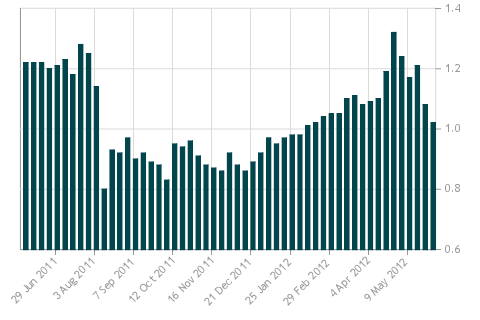BAX Futures are pricing in a chance for a quarter-point rate cut by the Bank of Canada:
| Month / Strike | Bid Price | Ask Price | Settl. Price | Net Change | Vol. |
| + 12 JN | 98.740 | 98.745 | 98.740 | 0.005 | 17775 |
| + 12 JL | 0.000 | 0.000 | 98.735 | 0.000 | 0 |
| + 12 AU | 0.000 | 0.000 | 98.725 | 0.000 | 0 |
| + 12 SE | 98.940 | 98.950 | 98.940 | 0.000 | 54050 |
| + 12 DE | 98.980 | 98.990 | 98.980 | 0.000 | 49142 |
| + 13 MR | 98.940 | 98.960 | 98.940 | 0.020 | 33314 |
| + 13 JN | 98.920 | 98.930 | 98.910 | 0.020 | 23069 |
| + 13 SE | 98.880 | 98.900 | 98.880 | 0.010 | 4780 |
| + 13 DE | 98.860 | 98.870 | 98.850 | 0.020 | 1467 |
| + 14 MR | 98.820 | 98.840 | 98.810 | 0.020 | 960 |
| + 14 JN | 98.770 | 98.780 | 98.760 | 0.210 | 571 |
| + 14 SE | 98.710 | 98.730 | 98.690 | 0.020 | 101 |
| + 14 DE | 98.650 | 98.670 | 98.630 | 0.020 | 83 |
| + 15 MR | 98.580 | 98.600 | 98.580 | 0.010 | 136 |
I personally don’t see it happening – Mark Carney is going to hold pat at 1%.
The following is a chart of 1-year Canadian treasury note yields:
What I find interesting is that just a month ago the market was pricing in a significant increase of interest rates – something flipped like a switch, and this is undoubtedly due to the theatrics going on in Europe at the moment. Big players are raising cash and this is depressing asset prices.
